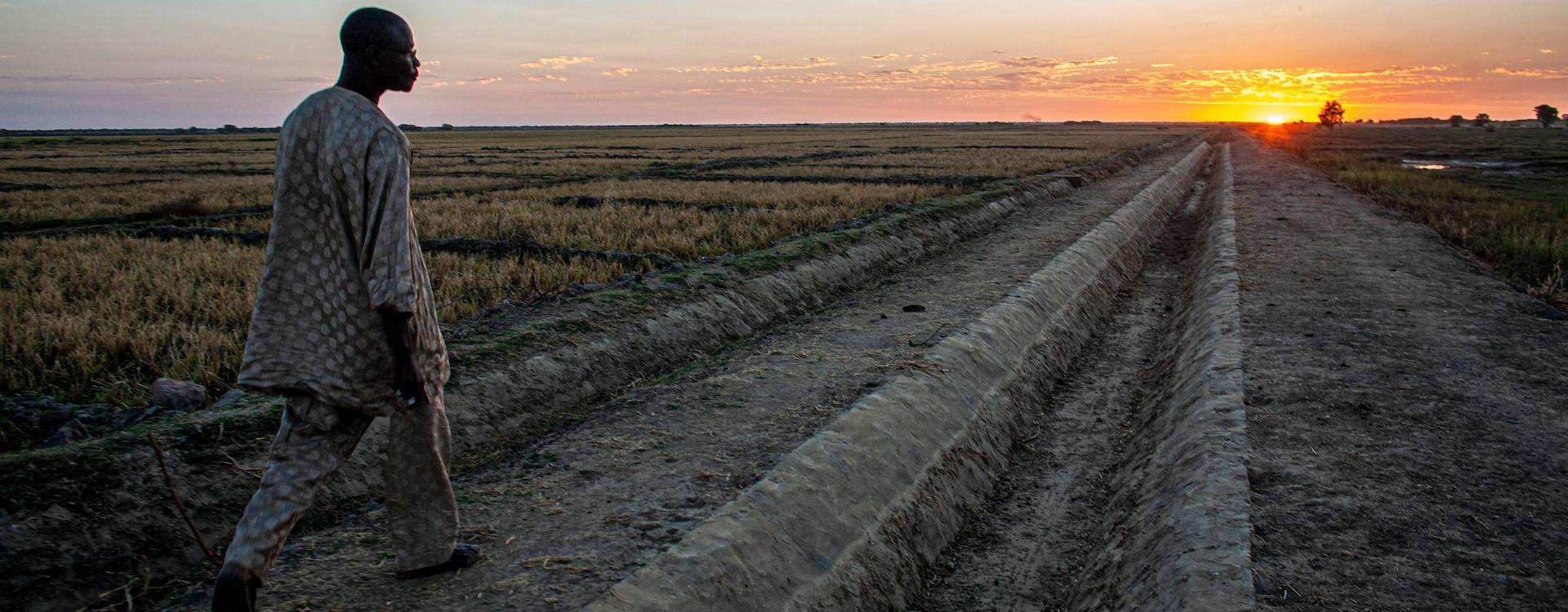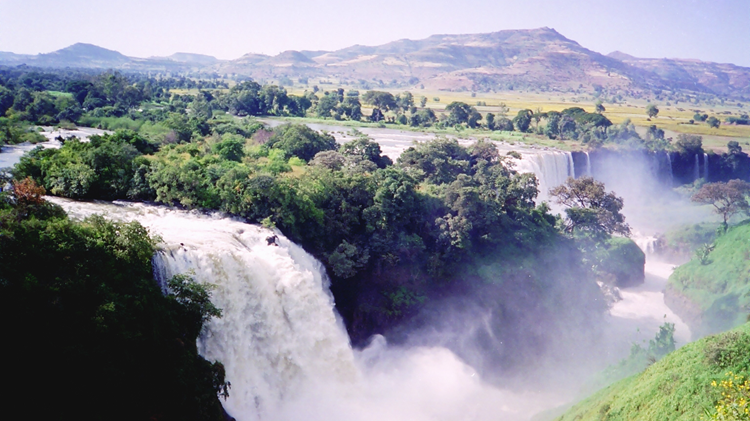Turning Africa’s climate security risks into opportunities

How Africa manages the different challenges posed by climate security will determine the future development agenda of the continent and its people.
Africa is one of the regions most affected by climate change worldwide, yet historically has contributed the least to greenhouse gas emissions. Climate change affects human security and exacerbates violent conflicts in the region, which is highly vulnerable due to inadequate state capacity to cope with multiple risks. This is partly due to weak institutional structures, inequality, poverty, lack of development and the absence of implementation mechanisms.
Therefore Africa finds itself in a balancing act of accelerating development and economic growth – especially in terms of energy provision, adapting to weather-induced disasters and responding to global commitments to keep greenhouse gas emissions low.
The continent’s vulnerabilities are becoming more evident with the increased frequency of extreme weather events. However, these risks presented by the climate crisis can also be reframed as an opportunity. The process of building resilient infrastructures, institutions and systems that simultaneously adapt to climate change can advance Africa’s development agenda.
Ngozi Amu, head of Research and Analysis at the United Nations Office for West Africa and the Sahel (UNOWAS), has highlighted the Sahel as an example where the intersection between poverty, youth unemployment, high reliance on agriculture and livestock rearing, dry conditions and socio-environmental vulnerability creates development and security risks.
Africa is one of the regions most affected by climate change, yet historically has contributed the least to greenhouse gas emissions
Women are particularly affected, since they account for 50% of the agricultural labour force. UNOWAS field visits to communities in the region in Senegal, Mauritania, Niger, Nigeria and Liberia have shown that the most significant livelihood challenges, according to local populations, have been sandstorms, reduced crop production from heatwaves and rainfall variability and land degradation. Increased competition over natural resources, which is clearly exemplified by farmer-herder conflicts, were also noted. Villagers have voiced the need for self-reliance strategies and anticipatory action to be supported in order to reduce donor dependence.
Recently, news headlines have consisted of more frequent alarming claims that millions of ‘climate refugees’ are heading to the global north. However, according to Hind Aïssaoui Bennani, Migration, Environment and Climate Change specialist at the International Organization for Migration, human mobility in the environment-security nexus is not always a risk. Migration in Africa has diverse manifestations. Historically, seasonal migration has been used as an adaptation strategy to climate change. For some vulnerable populations, the lack of resources impedes migration, and immobility affects their adaptation capacities to climate change.
This is even more evident in conflict-affected areas. According to the Internal Displacement Monitoring Centre, at the end of 2021 the region accounted for 265 000 internally displaced persons due to floods, storms and landslides. This doesn’t account for slow-onset events such as land degradation, water scarcity, coastal erosion or sea level rise.
However, cross-border migration is often the last resort; 90% of migration in West Africa happens within the region. In contrast, rural-urban migration or short-distance migration occurs when labour migration is a significant factor in food production.
Climate change affects human security and exacerbates violent conflicts in the region
Finally, it is critical to equip cities to deal with the multi-layered challenges, for example, supporting incoming migrants.
According to Faten Aggad, senior adviser on Climate Diplomacy and Geopolitics at the African Climate Foundation, international cooperation is shaping the debate on climate and security. Action on climate should not only happen within climate negotiations or through technical approaches; cross-sector coordination is needed. She also highlighted that investment was often overlooked in the climate security discussion. Indeed, climate finance targets still need to be met, particularly around adaptation, which is especially relevant for Africa.
Aggad warns that it is insufficient to diverge official development assistance resources from other sectors to climate action, because this might further amplify fragility and security challenges and hinder development goals.
Communities in the Sahel have reported that the challenge of climate change has also brought new ways of working the land, like projects on resilient crops and climate and conflict-smart agriculture practices that connect conflicting parties across the region. Initiatives led by women and youth in the Sahel that combine digital innovations in the rural sector can develop new jobs and demonstrate how climate security risks could be addressed.
Risks presented by the climate crisis can be reframed as an opportunity
Many co-benefits can come from coordinating climate action and peacebuilding efforts. As Amu notes, connecting the local realities on the ground with the geopolitics of climate action and coordination across scales is fundamental. For example, connecting nationally determined contributions and national adaptation plans to local communities and their preferences for sustainable development paths in a conflict-sensitive manner promotes peace.
Furthermore, recent models have shown that investing in disaster risk reduction can spur economic growth in developing economies by protecting critical infrastructure and valuable assets for production even if disaster risks do not materialise.
Resilience strategies being implemented on the ground in Africa are abundant. Therefore it is crucial to acknowledge and support these efforts and approaches and scale up learnings intra-regionally. The perceptions and traditional knowledge of farmers on the ground are invaluable assets to inform policy development processes, for example, scaling up planting indigenous crops, which are more resilient to changes in climate. In Ethiopia, catchment rehabilitation projects that use traditional knowledge have been successful in reducing flooding.
Other models are starting to be deployed in regions such as North West Nigeria, where persistent herder-farmer conflicts have escalated into continuous violence, rising crime and marginalisation. Approaches for deploying nature-based solutions and climate-smart livelihoods, informed by data systems that ensure community participation, aim to address the root causes of insecurity.
Ninety percent of migration in West Africa happens within the region
Communities with better access to forecasting and environmental information can use the data to revitalise and facilitate local dispute resolution systems that have been weakened due to competition over natural resources. Furthermore, linking such local systems to state-level climate and conflict resilience infrastructures is critical in sustaining peace processes and enhancing capacities to coordinate and support climate adaptation and food security.
Aggad calls attention to Africa’s potential, not only as an export-oriented provider of natural resources needed for the green transition, but primarily for ‘green industrialisation’ processes that add value in the region. A particular focus relies on developing small and medium-sized enterprises to increase the number of jobs available.
The international community can support Africa in this balancing act of reducing fragility while keeping emissions low by contributing to affirmative climate justice measures. This includes supporting community participation in project planning and decision making and multilateral financial reform, and being aware of the unintended consequences of some climate policies.
EU and US decision makers must bear in mind that climate action policies may impede access to markets if environmental safeguards are not in place for African producers. Whole value chains that depend significantly on these markets can be left out, adding to the fragility risks of farmers that rely on these cash crops for their livelihoods. Therefore, exemption regimes and a well-informed peace-positive green transition should be implemented.
Background:
During the Berlin Climate Security Conference 2022, the Institute for Security Studies and adelphi joined forces to host a digital session on Africa’s future and how to turn climate-security risks into opportunities. The session contextualised the alarming effects of climate change on human security in Africa and demonstrated how the continent’s vulnerabilities are becoming more evident with the increased frequency of extreme weather events. This blogpost draws from the expertise exchanged during this session and resulting discussion of how the risks presented by the climate crisis can also be reframed as an opportunity.
Image: © Horst Friedrichs / Alamy Stock Photo







